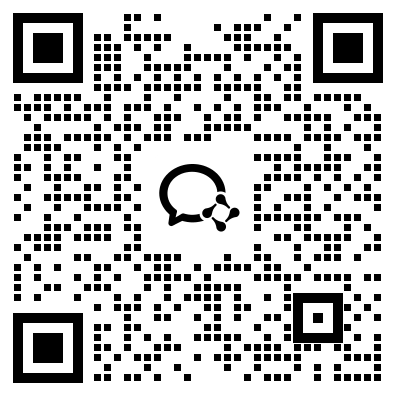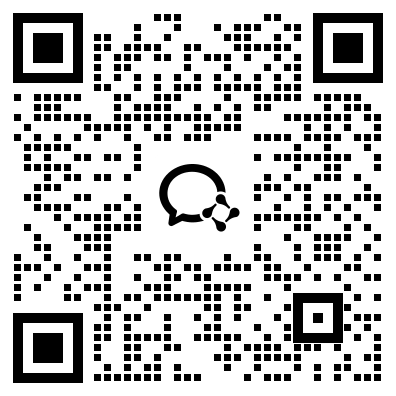特惠-26考研冲刺
特惠-27考研课
双证-在职硕士
免联考-同等学力
复试分数线
26复试全面指导
模拟复试面试
26考研-全套真题
26考研估分
保研-路线图
27考研-智能择校
27考研-英语测评
27考研-新大纲对比
热门-计算机择校

扫码加入训练营
牢记核心词
学习得礼盒
2015考研英语复习正是强化复习阶段,考研英语阅读在考研英语中占了40分,所以考研英语阅读是英语科目中重要的一项。新东方名师范猛老师曾建议过考研生需要坚持每天泛读10-15分钟的英文原刊。强烈推荐了杂志《经济学人》.杂志中的文章也是考研英语的主要材料来源.希望考研考生认真阅读,快速提高考研英语阅读水平。
The first case of ursine tool use
第一只会用工具的熊
Ready for my close-up, Dr Deecke
Deecke博士,准备给我来张特写吧
PRIMATES apart, few mammals employ tools.
除了灵长类动物,会使用工具的哺乳类动物屈指可数。
Sea otters use rocks to smash clams open,
海獭会在石头上砸开蛤蜊;
dolphins wrap sponges around their noses to protect themselves while they forage on theseabed,
海豚在海床上觅食时,会将海绵绑在鼻子上以保护自身;
elephants swat insects with branches and humpback whales exhale curtains of bubbles totrap schools of fish.
大象会用树枝拍打昆虫;驼背鲸会呼出阵阵气泡来困住鱼群。
Until now, these four examples had been thought the extent of the non-primatemammalian tool-users club.
至今,人们仍认为非灵长类动物中只有这四种会使用工具。
But a study just published in Animal Cognition, by Volker Deecke of the University of StAndrews, in Britain, has added a fifth and rather surprising one.
但英国圣安德鲁大学的Volker Deecke在《动物认知》上刚发表的研究指出了第五种会用工具的动物,而且是令人相当意外的一种。
That epitome of rugged wildness, the grizzly bear, seems to be the only species other thanhumans to have invented the comb.
粗犷野性的象征—灰熊,看来是除了人类以外唯一一种发明了梳子的动物。
Dr Deecke made this discovery while studyinggrizzly-bear behaviour from a small boat in Glacier Bay National Park, Alaska, on July 22nd2010.
这一点是Deecke博士于2010年7月22日在阿拉斯加冰河湾国家公园一艘小船上研究灰熊习性时发现的。
After a period of play-fighting with another bear and a short bout of feeding on a beachedwhale carcass, a bear of between three and five years of age, sex unknown, waded into theshallows of the bay.
一只灰熊在与另一只熊打闹了一阵并吃了一点被冲到沙滩上的鲸鱼尸体后,涉水来到了海湾的浅滩中。
Once there, it picked up a fist-sized rock and carefully rotated it for about a minute beforedropping it back into the water.
在那,它捡起了一块拳头大的石头,小心翼翼地旋转了约一分钟后,将其扔回水中。
Moments later, it picked up another, of similar size, and again rotated it.
片刻之后,它又捡起了另一块差不多大小的石头旋转起来。
This time, rather than discarding the stone, it held it against its muzzle and started to rub.
但这次它没扔掉石头,反而把石头放到口鼻处开始来回磨蹭。
Using its left paw to press the rock against its skin and its right paw to support the rock'sweight, the bear rubbed away at its muzzle and face for roughly a minute before dropping thestone back into the water.
那只熊用左掌将石头按在皮肤上,用右掌托着石头,将石头在口鼻和脸上蹭了大约一分钟后才将石头扔回水里。
Then it grabbed a third stone of the same size, rotated it and rubbed its face, muzzle andneck for a further two minutes before discarding it.
然后,它捡起第三块同样大小的石头并在旋转后用来磨蹭脸、口鼻和脖子将近两分钟后将其扔掉。
This done, it spent two minutes grooming its right paw with its teeth before returning to thewhale carcass.
做完这些后,它又花了两分钟用牙齿来梳理右掌的毛,之后便回到鲸鱼尸体处。
Dr Deecke found, upon close examination of his photographs, that all three rocks wereencrusted with barnacles and he reckons these were acting as the functional equivalent ofthe teeth of a comb.
博士Deecke在仔细研究所拍照片后发现,那三块石头上都粘有藤壶,而他认为这些藤壶的功能梳齿一样。
He thinks the bear was probably using its makeshift combs for comfort, rather than vanity.
Deecke博士认为,那只熊自制梳子可能是想让自己舒服,而不是为了美观。
But crucially for the concept of tool-use, the animal's rejection of the first rock it picked upshows a discriminating understanding of what was required to get the right amount ofscratching from a comb;
但是,那只熊没有用它捡到的第一块石头,这说明它有能力判断子什么样的梳子才好用;
which rock, in other words, was the tool for the job.
换言之,就是哪块石头可以拿来当梳子。这一点对判断动物是否会使用工具至关重要。
An important question from a biological point of view is whether this animal's behaviour isunique.
在此,有一个很重要的生物学问题:是不是只有这一只熊会使用工具?
Other tool-using mammals are social species.
其他会使用工具的哺乳类动物都是群居动物,
That means one individual's chance invention is easily copied by others of its group,resulting in a primitive culture.
也就是说个体偶然的发明很容易被群体里的其他成员模仿,从而形成原始的文化。
Grizzly bears have not been considered particularly sociable in the past, but if others inGlacier Bay are seen combing themselves in this way that view might have to change.
过去,人们并不认为灰熊具有明显的群居特征,但如果冰河湾有其他灰熊被发现使用这种方法梳理毛发,那上述观点就可能会被推翻。
It might, though, be that Dr Deecke's preening animal is unique.
不过,也有可能只是Deecke博士看到的那只梳理毛发的熊比较特别罢了。
That would suggest it came up with the idea of using rocks as combs by itself, rather thancopying someone else—truly smarter than the average bear.
那就意味着这只熊拿石头当梳子是自己的原创,并非模仿——果然是只特别聪明的熊。
词语解释
1.employ v.雇佣;使用
They employ casual labor to pick the fruit
他们雇佣临时工摘水果。
2.sponge n.海绵
The sponge soaked in the water on the desk.
海绵将书桌上的水吸了进去。
3.mammalian n.哺乳动物
The report is on mammalian thermoregulation.
那份报告是有关哺乳动物的体温调节。
4.glacier n.冰河;冰川
The glacier dislocated the great stones.
冰河搬动了巨石。
5.rotate v.轮流;旋转
Interns have to rotate for a few months.
实习医生轮流工作了几个月。
8月底,很多高校2015年考研招生简章已经发布,请广大15年考生关注,预计到8月底9月初,2015年全国硕士研究生招生简章会陆续发布完成,新东方在线小编第一时间跟踪发布,请大家收藏关注!另有研究生专业目录、考研参考书等最新考研信息,帮助考生及时了解目标院校招生政策及信息。另有西医综合专业考试
新东方名师考研课程 购买进行中
【英语阅读资料】这里有↑↑↑

 资料下载
资料下载
2014年-2025年考研历年真题汇总
发布时间:2024-04-25扫码添加【考研班主任】
即可领取资料包
考研大纲PDF电子版下载-历年(附解析)
发布时间:2024-04-25扫码添加【考研班主任】
即可领取资料包
2026年考研政数英备考资料zip压缩包
发布时间:2024-04-25扫码添加【考研班主任】
即可领取资料包
考研英语大纲词汇5500打印版(基础必备)
发布时间:2024-04-25扫码添加【考研班主任】
即可领取资料包
新东方在线考试模拟题【12套】
发布时间:2024-04-25扫码添加【考研班主任】
即可领取资料包
2026年考研专业课知识点总结
发布时间:2024-04-25扫码添加【考研班主任】
即可领取资料包
新东方考研资料下载地址
发布时间:2023-05-17新东方在线考研资料合集
下载方式:微信扫码,获取网盘链接

目录:
1.2013-2023年近10年政数英真题及解析PDF版(新东方)
2.2013-2023年专业课考试历年真题及解析PDF版
3.24考研复习备考资料大合集:大纲+备考资料+词汇书+考前押题+自命题
资料介绍:
1.2013-2023年近10年政数英真题及解析PDF版(新东方)
 、
、
2.2013-2023年专业课考试历年真题及解析PDF版


3.24考研复习备考资料大合集

3.24考研复习备考资料:考研大纲

3.24考研复习备考资料:政数英备考资料+自命题真题

------------------
考研备考过程中,尤其是专业课部分,参考往年的考试真题,对于我们的复习有更好的帮助。北京大学考研真题资料都有哪些?小编为大家进行了汇总。
北京大学考研真题资料-公共课

北京大学考研真题资料-专业课


以上就是关于“北京大学考研真题资料下载(历年汇总)”的整理,更多考研资料下载,请关注微信获取下载地址。
2024考研公共课必背知识点汇总
发布时间:2023-01-03扫码添加【考研班主任】
即可领取资料包
2013-2023考研历年真题汇总
发布时间:2023-01-03扫码添加【考研班主任】
即可领取资料包
考研英语大纲词汇(PDF可打印)
发布时间:2023-01-03扫码添加【考研班主任】
即可领取资料包
2024考研专业课知识点总结
发布时间:2023-01-03扫码添加【考研班主任】
即可领取资料包
2023考研政治 内部押题 PDF
发布时间:2022-11-16扫码添加【考研班主任】
即可领取资料包
徐涛:23考研预测六套卷
发布时间:2022-11-16扫码添加【考研班主任】
即可领取资料包
考研政数英冲刺资料最新整理
发布时间:2022-11-16扫码添加【考研班主任】
即可领取资料包
23考研答题卡模板打印版
发布时间:2022-11-16扫码添加【考研班主任】
即可领取资料包
2023考研大纲词汇5500PDF电子版
发布时间:2022-07-28扫码添加【考研班主任】
即可领取资料包
考研历年真题(公共课+专业课)
发布时间:2022-07-28扫码添加【考研班主任】
即可领取资料包
考研英语阅读100篇附解析及答案
发布时间:2022-01-07扫码添加【考研班主任】
即可领取资料包
新东方考研学霸笔记整理(打印版)
发布时间:2022-01-07扫码添加【考研班主任】
即可领取资料包
2001-2021年考研英语真题答案(可打印版)
发布时间:2022-01-07扫码添加【考研班主任】
即可领取资料包
考研英语词汇5500(完整版下载)
发布时间:2022-01-07扫码添加【考研班主任】
即可领取资料包
2022考研政审表模板精选10套
发布时间:2022-01-07扫码添加【考研班主任】
即可领取资料包
历年考研真题及答案 下载
发布时间:2021-12-09扫码添加【考研班主任】
即可领取资料包
考研政审表模板汇总
发布时间:2020-06-17扫码添加【考研班主任】
即可领取资料包
近5年考研英语真题汇总
发布时间:2020-06-17扫码添加【考研班主任】
即可领取资料包
考研英语大纲词汇5500
发布时间:2020-06-17扫码添加【考研班主任】
即可领取资料包
2022考研12大学科专业排名汇总
发布时间:2019-11-21扫码添加【考研班主任】
即可领取资料包
2023考研政治复习备考资料【珍藏版】
发布时间:2019-11-21扫码添加【考研班主任】
即可领取资料包
考研英语万能模板+必备词汇+范文
发布时间:2019-11-21扫码添加【考研班主任】
即可领取资料包
考研数学一、二、三历年真题整理
发布时间:2019-11-21扫码添加【考研班主任】
即可领取资料包

添加班主任领资料
添加考研班主任
免费领取考研历年真题等复习干货资料

 推荐阅读
推荐阅读
为了让考研的同学更高效地复习考研英语,新东方在线考研频道整理了“考研英语1阅读错几个后的复习计划”,考研的同学可以了解一下,希望对大家有所帮助。
为了让考研的同学更高效地复习考研英语,新东方在线考研频道整理了“考研英语二阅读篇数及题型分析”,考研的同学可以了解一下,希望对大家有所帮助。
为了让考研的同学更高效地复习考研英语,新东方在线考研频道整理了“考研英语阅读理解的总结与反思”,考研的同学可以了解一下,希望对大家有所帮助。
来源 : 网络 2025-06-13 08:02:00 关键字 : 考研英语阅读理解
为了让考研的同学更高效地复习考研英语,新东方在线考研频道整理了“提高考研英语一阅读理解的五大策略”,考研的同学可以了解一下,希望对大家有所帮助。
为了让考研的同学更高效地复习考研英语,新东方在线考研频道整理了“探索考研英语阅读文章的逻辑结构”,考研的同学可以了解一下,希望对大家有所帮助。
来源 : 网络 2025-06-12 08:03:00 关键字 : 考研英语阅读

 资料下载
资料下载
扫码添加【考研班主任】
即可领取资料包
扫码添加【考研班主任】
即可领取资料包
扫码添加【考研班主任】
即可领取资料包
扫码添加【考研班主任】
即可领取资料包
扫码添加【考研班主任】
即可领取资料包
扫码添加【考研班主任】
即可领取资料包
新东方在线考研资料合集
下载方式:微信扫码,获取网盘链接

目录:
1.2013-2023年近10年政数英真题及解析PDF版(新东方)
2.2013-2023年专业课考试历年真题及解析PDF版
3.24考研复习备考资料大合集:大纲+备考资料+词汇书+考前押题+自命题
资料介绍:
1.2013-2023年近10年政数英真题及解析PDF版(新东方)
 、
、
2.2013-2023年专业课考试历年真题及解析PDF版


3.24考研复习备考资料大合集

3.24考研复习备考资料:考研大纲

3.24考研复习备考资料:政数英备考资料+自命题真题

------------------
考研备考过程中,尤其是专业课部分,参考往年的考试真题,对于我们的复习有更好的帮助。北京大学考研真题资料都有哪些?小编为大家进行了汇总。
北京大学考研真题资料-公共课

北京大学考研真题资料-专业课


以上就是关于“北京大学考研真题资料下载(历年汇总)”的整理,更多考研资料下载,请关注微信获取下载地址。
扫码添加【考研班主任】
即可领取资料包
扫码添加【考研班主任】
即可领取资料包
扫码添加【考研班主任】
即可领取资料包
扫码添加【考研班主任】
即可领取资料包
扫码添加【考研班主任】
即可领取资料包
扫码添加【考研班主任】
即可领取资料包
扫码添加【考研班主任】
即可领取资料包
扫码添加【考研班主任】
即可领取资料包
扫码添加【考研班主任】
即可领取资料包
扫码添加【考研班主任】
即可领取资料包
扫码添加【考研班主任】
即可领取资料包
扫码添加【考研班主任】
即可领取资料包
扫码添加【考研班主任】
即可领取资料包
扫码添加【考研班主任】
即可领取资料包
扫码添加【考研班主任】
即可领取资料包
扫码添加【考研班主任】
即可领取资料包
扫码添加【考研班主任】
即可领取资料包
扫码添加【考研班主任】
即可领取资料包
扫码添加【考研班主任】
即可领取资料包
扫码添加【考研班主任】
即可领取资料包
扫码添加【考研班主任】
即可领取资料包
扫码添加【考研班主任】
即可领取资料包
扫码添加【考研班主任】
即可领取资料包

 阅读排行榜
阅读排行榜
 相关内容
相关内容